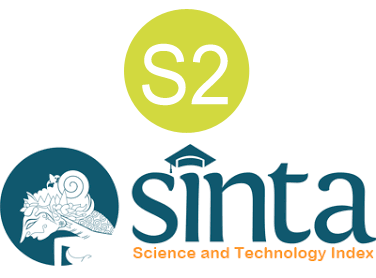Muallafah Muslimat NU Buleleng Bali Religious Tolerance and Moderation in a Hindu Society in Bali
DOI:
https://doi.org/10.37329/jpah.v9i1.3944Keywords:
Muslimat NU, Religious Moderation, Hinduism, Muallafah, BaliAbstract
Religious conversions made by Balinese people from Hinduism to Islam or to Islam are evidence of religious moderation in Hinduism. The interaction between the Hindu community of Buleleng and the Muslim community has created a new culture or cultural acculturation and even marriage which has an impact on religious conversion from Hinduism to Islam. This article aims to reveal the tolerance and moderation of Hinduism that has a major impact on the moderate social religious activities of Muslimat NU Buleleng so that a moderate Muallafah emerges. This research is a qualitative research with Anthropology and Sociology of Religion approach. The primary data of this research are Muallafah and Muslimat NU Ranting Seririt Organisation, Buleleng District, Bali. The findings of this research are that the majority of Buleleng Bali Muallafahs come from Hinduism and make religious conversions due to marriage. The Muallafah joined the Muslimat NU because the tolerance and moderation of the Hindu community towards minority Muslims is quite high. Muslimat NU's social religious activities include Friday blessings; Pengajian Umum, Dzikir Akbar, and Reciting Burdah Covid 19 Prevention Social Service and Soft Skill Training and Economic Empowerment. The success of socio-religious activities carried out by Muslimat NU in Bali towards the majority Hindu Balinese community is evidence of tolerance and religious moderation of Hindu society in Bali so that Muallafah Muslimat NU Buleleng Bali feels living in harmony and peace without discrimination and pressure from the surrounding community and even family for choosing Islam as a new religion.
References
Akhmadi, A. (2019). Moderasi Beragama Dalam Keragaman Indonesia Religious Moderation In Indonesia’s Diversity. Jurnal Diklat Keagamaan, 13(2), 45-55.
Ali, A. M., (2011). Agama dalam Pergumulan Masyarakat Kontemporer. Yogyakarta: Tiara Wacana.
Aziz, A. A., & Hidayat, N. (2010). Konversi Agama Dan Interaksi Komunitas Muallaf Di Denpasar. Jurnal Penelitian Keislaman, 7(1), 175-200.
Budarsa, G. (2015). Karakteristik Budaya Komunitas Islam Pegayaman Buleleng, Bali. Jurnal Harian Regional, 11(1).
Budiwanti, E. (2015). The Cresent Behind the Thousand Holy Temple an Ethnografic Study of the Minority Muslim of Pegayaman North Bali. Yogyakarta: UGM Press.
Firdaus, F. (2016). Menjadi Tionghoa Muslim (Studi Tentang Alasan Pindah Agama dan Pola Interaksi Sosial Harmonis di Kalangan Komunitas Tionghoa Kota Padang. Master Thesis, Universitas Andalas.
Fitriyani, A., Rene, B., Darma, & Subair. (2019). Pendampingan Dan Pembinaan Komunitas Muallaf Melalui Pembibitan Perangkat Syara’Di Desa Wamana Baru Kec. Fena Leisela Kab. Buru, Maluku. Dialektika: Jurnal Pemikiran Islam dan Ilmu Sosial, 12(1), 11-25.
Hawi, A. (2014). Seluk Beluk Ilmu Jiwa Agama. Jakarta: Rajawali Press.
Ismiati, T. A. (2017). Peran Muslimat NU di Kabupaten Kediri: 1950-1999. Simki-Pedagogia, 1(9).
Indonesia, D. Y. G. M. (2020). Yayasan Genta Mualaf Indonesia. Harmoni, 19(1), 162-171.
Köse, A. (1996). Religious Conversion: Is It an Adolescent Phenomenon? The Case of Native British Converts to Islam. The International Journal for the Psychology of Religion, 6(4), 253-262.
Lawrence, J. A., & Valsiner, J. (1993). Conceptual Roots of Internalization: From Transmission to Transformation. Human Development, 36 (3).
Lawrence, J. A., & Valsiner, J. (1993). Conceptual Roots Of Internalization: From Transmission To Transformation. Human development, 36(3), 150-167.
Mahendra, R. J., & Sriyono, S. (2024). Terciptanya Toleransi Umat Beragama Hindu dan Islam Hasil Moderasi Agama Di Desa Kayu Kebek Pasuruan. Budimas: Jurnal Pengabdian Masyarakat, 6(1).
Minftahuddin, M. (2010). Islam Moderat Konteks Indonesia Dalam Perspektif Historis. Mozaik: Jurnal Ilmu-Ilmu Sosial Dan Humaniora, 5(1), 41-54.
Mustari, M. (2014). Manajemen Pendidikan. Jakarta: Raja Grafika.
Nasir, M., Ridlwan, & Abdushomad, M. A. (2015). Mencari Tipologi Format Pendidikan Ideal: Pondok Pesantren di Tengah Arus Perubahan. Yogyakarta: Pustaka Pelajar.
Nordjolt. H. S. (2015). Bali Benteng Terbuka 1995-2005 Otonomi Daerah Demokrasi Elektrokal dan Identitas-Identitas Defensif. Denpasar: Pustaka Larasan.
Pageh, I. M. (2013). Analisis Faktor Integratif Nyama Bali-Nyama Selam, Untuk Menyusun Buku Panduan Kerukunan Masyarakat Di Era Otonomi Daerah. Jurnal Ilmu Sosial dan Humaniora, 2(2), 240.
Paramita, C. A. L., & Kaler, I. K. (2021). Potret Mualaf dalam Mempelajari Islam (Studi Kasus Lima Malaf di Denpasar Barat). Jurnak Syntax Admiration: Sosial Teknik, 2(4).
Putra, I. N. D. (2014). Bali Menuju Jagaditha: Aneka Perspektif. Denpasar: Pustaka Bali Post.
Qorina, D., Pramono, S. E., & Sodiq, I. (2015). Peranan Muslimat Dalam Pemberdayaan Perempuan Di Bidang Sosial Keagamaan Di Batang Tahun 1998-2010. Journal of Indonesian History, 4(1).
Rahmat, J. (2013). Psikologi Agama Sebuah Pengantar. Bandung: Mizan.
Ramdhani, F. Z. B., Busro, & Wasik, A. (2020). The Hindu-Muslim Interdependence: A Study of Balinese Local Wisdom. Walisongo: Jurnal Penelitian Sosial Keagamaan, 28(2), 195-218.
Supartha, W. (2019). Bali dan Masa Depannya. Denpasar: PT. Offset BP.
Suryana, D. (2012). Bali dan Sekitarnya. Denpasar: Manikgeni.
Susanti. (2015). Potensi Masjid Nur Singaraja, Bali Sebagai Sumber Belajar Sejarah Kebudayaan di SMA. Widya Winayata: Jurnal Pendidikan Sejarah, 3(3).
Yasid, A. (2009). Membangun Islam Tengah Refleksi dua Dekade Ma'had ‘Aly Situbondo. Yogyakarta: Pustaka Pesantren.
Downloads
Published
How to Cite
Issue
Section
License
Copyright (c) 2025 Musfiroh Nurlaili H., Wati Nilamsari, Muhammad Shodiq, Mu'min Roup, Mauidlotun Nisa

This work is licensed under a Creative Commons Attribution-ShareAlike 4.0 International License.
An author who publishes in the Jurnal Penelitian Agama Hindu agrees to the following terms:
- Author retains the copyright and grants the journal the right of first publication of the work simultaneously licensed under the Creative Commons Attribution-ShareAlike 4.0 License that allows others to share the work with an acknowledgement of the work's authorship and initial publication in this journal
- Author is able to enter into separate, additional contractual arrangements for the non-exclusive distribution of the journal's published version of the work (e.g., post it to an institutional repository or publish it in a book) with the acknowledgement of its initial publication in this journal.
- Author is permitted and encouraged to post his/her work online (e.g., in institutional repositories or on their website) prior to and during the submission process, as it can lead to productive exchanges, as well as earlier and greater citation of the published work (See The Effect of Open Access).
Read more about the Creative Commons Attribution-ShareAlike 4.0 Licence here: https://creativecommons.org/licenses/by-sa/4.0/.








